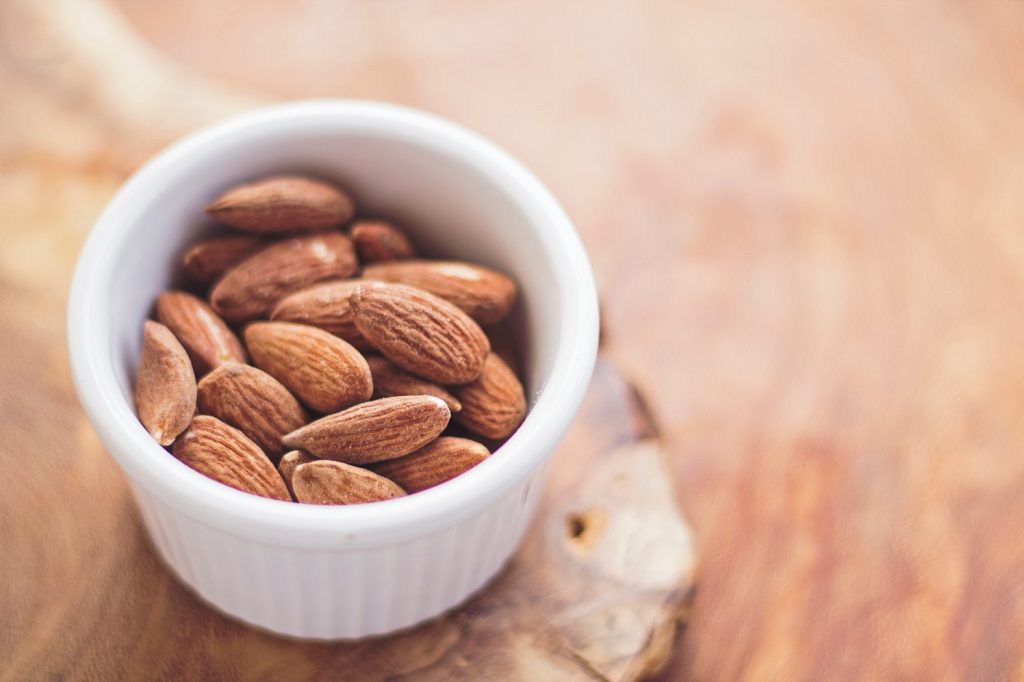Your brain is the most selfish and demanding organ in the body when it comes to energy. It will pull rank on any other organ in order to have the energy to meet its needs. It makes up approximately 2% of your body weight, but consumes around 20% of available oxygen, and up to 50% of glucose. If glucose is not available, it MUST have an alternative fuel supply.
When your carb intake drops (either through fasting or not eating carbs) and glucose levels drop to almost zero, the body switches into ketosis. Ketosis can be achieved without a total fast as it’s essentially a straightforward energy switch from glucose and “normal” fats, all you need to do to achieve it is to remove carbohydrates from the diet, limit proteins, and increase fats, and when glucose levels reach almost zero your body will make the switch. It’s not something I recommend because it disregards the benefits of a high and varied vegetable intake for all health benefits including maintaining a healthy gut.

We can produce ketones when we have some blood glucose, but full ketosis is achieved when the switch to ketones is total. If you are used to three meals per day, even skipping one meal can result in trace amounts of ketones in the blood but this is not enough to put you into total ketosis. It varies between individuals, but for most people it occurs anywhere between 1-3 days with totally depleted glucose levels.
The average adult stores around 40,000 calories as fat, and only 2000 as glucose. The only cells that burn fat are muscle cells, so the more muscle you have on your body, the more fat calories you burn, even when you are sleeping. The amount of muscle (Lean Body Mass) you have depends on a healthy production of Growth Hormone, the right foods, and an active lifestyle. Although you are constantly burning a mixture of fat and glucose, when you still have glucose left in your storage tanks (in the blood and in small pockets in the muscles and the liver) you burn a higher percentage of this instead of fat. Essentially you become a sugar burner and not a fat burner. If you improve your insulin sensitivity, listen to your body, and choose the right balance of nutrients (all of this is accounted for in The Colour Code System and Colour fast -Re-set) then you can retrain your body to become a fat burner without going into full ketosis for long periods of time.
Ketosis initially became popular in the 20’s and 30’s as a drug free treatment for epilepsy but was totally replaced by anticonvulsant drugs as soon as they were developed. It has regained popularity in some clinical circles, although it is still held in contempt in others. However, the potential benefits when done correctly do include:
Reduced or eliminating Cravings
One of the benefits of going into ketosis is that cravings associated with wide fluctuations in blood sugar, stop. This can be a critical element as it allows you to comfortably stop eating carbs without feeling deprived. This process can re-set hunger signals.
Improving Insulin sensitivity
When you consume a high carb diet your cells are predisposed to insulin resistance (I.R.) which means insulin cannot do its job of getting molecules inside of the cells. When you are in ketosis it is an opportunity to reset this resistance, especially with regular fasting or intermittent fasting.
Mental clarity and cognitive function
The brain can effectively use ketones in place of glucose and there is a suggestion that general alertness and sharpness of focus is a result of ketosis, although this is a somewhat controversial area, anecdotal evidence in this regard is prevalent.
Improved sleep
You are more likely to go into deep REM sleep as your body rejuvenates and heals.
Cholesterol
HDL (good) cholesterol is increased in relation to LDL (bad) cholesterol which is reduced.
Inflammation reduced
As the immune system becomes more efficient and toxic load is reduced the immune system has less extra work to do.
Triglycerides’ reduced
As triglycerides are being metabolised to provide energy circulating TGs in the blood are reduced.
Anxiety and mood swings
Since its inception in the 1920s, the neurological benefits of being in ketosis have been at its forefront. It’s common to feel more alert mentally and emotionally.
When you make the transition into ketosis you may initially experience some negative side effects, especially if you make the transition too quickly. There is hugely conflicting advice as to how long it is either safe or optimal to stay in ketosis, with “expert” advice ranging from not at all to indefinitely, so you must listen to your body and make an informed choice.
Just over a year ago I was diagnosed with colitis, having suffered from IBS for many years. Untreated it may have gone onto become ulcerative colitis, and obviously that was not an option for me! So I went back to my nutritional roots and began to research how to improve my gut health. You won’t be surprised to know that improving my microbiome came out top of the list.
A big feature of my everyday diet now is following a plan that maximises my guts ability to digest and absorb my foods, and also to constantly repopulate the bacteria that carry out these amazing tasks. As well as dietary intake, intermittent fasting has been a key factor in helping me achieve that, and all of my symptoms (especially the bloating and stomach pains) have significantly reduced or have disappeared completely. Also, I almost never feel the need to snack, if I do, I know it’s a genuine hunger signal that should be listened to, my mental clarity is much more consistent and my weight is totally stable. However, my body is not your body, so pay attention to what is happening inside YOU. I do not measure ketone bodies as I know by how I feel that I am relying on a mix of ketones and glucose (i.e. low-level ketosis) and that’s how my body functions at its optimum. I am not aiming for full ketosis.
Although some discomfort is normal for the first 48 hours of a fast, if you are fasting for the maximum 3 days and aiming for ketosis these are the signs to watch out for.
• Feeling over tired and experience low energy
• Trouble sleeping
• Increased cravings, especially for carbs and sugar
• Feeling weaker during workouts and not recovering well
• Being more moody or irritable
• Losing libido
• Bad breath
If you experience these symptoms you may have gone too quickly into a fast or have carried it on for too long. Going into and out of a fast is as important as the fast itself as preparation will hugely impact how you feel during the fast and going straight back to a full English after any fast will absorb these more quickly into a newly cleaned system. Not unlike someone walking with muddy boots over a newly cleaned floor. The good work can be quickly undone.

My 14-day Colour Fast Re-set programme is designed to take you into low level ketosis so that you make the switch from being a sugar burner to being a fat burner. Although it is quite a strict regime, you can keep elements of it as you move into a more relaxed way of eating. Watching your food windows i.e. when you feast and when you famine, as well as getting the balance of nutrients right, i.e. minimising PINKS and maximising your GREENS to improve liver function and gut health, plus having plenty of good quality BLUES to give you all the good fats and proteins you need, is the key to permanent weight loss, and improved health. More details here>>>

